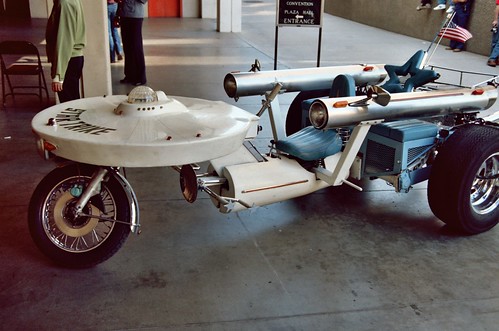
Gravity Arranged
- William Estep
- Writing
- May 11, 2011
Table of Contents
How does gravity work?
Oh the dreaded scale! We’ve all heard the story about Newton and an apple. Anyone who’s been ice skating knows with personal clarity the importance of treating gravity with respect.
So how does it work? Any two objects in the universe with mass are attracted to each other. But it’s not just a factor of attraction of mass, gravity is a force affecting space as well.
Is the space around newton’s apple bending toward the apple drawing apples in? Well…yes and no. Yes, because the theory applies to small objects, but gravity is a large scale force. It’s the force on the scale of planets and suns, of rotating galaxies and black holes. It’s not the force attracting bits of apple to other bits of apple (small nuclear force) and it’s not magnetism (the force between electric currents.)
But what is gravity? Forces are generally attributed to particles:
Gluons
Photons
Bosons
Gravitons.
Yep, those last ones…the gravitons.
If another massive particle encounters this field, it experiences a force that can be described in quantum terms as an exchange of virtual gravitons by the two masses. On the other hand, if a massive particle is accelerated, its gravitational field is ‘shaken’ to produce a gravitational wave that spreads out through spacetime from the particle.
We’re not talking about a pitcher and a catcher tossing a baseball. (My first and last sports metaphor.)
Does gravity change naturally?
Yes. We have recently observed gravitational waves in binary neutron star systems. Nasa has a great video simulating the collapse of a binary star system. The LISA project should give us more detailed information.
From what we have seen or speculated, gravity does vary under certain circumstances. We talk about a ‘gravitational constant’. In fact, put gravitational constant in google, and you get:
gravitational constant: \(G= 6.673 x 10^{−11} m^3 kg^{−1} s^{−2}\)
But what we use as a constant, is really an estimation based on observation and assumption. Granted, it is a very, very precise estimation, but it’s not a fixed value.
The Committee on Data for Science and Technology (CODATA) sets the value for the gravitational constant. Bet that’s a fun job.
The recent Gravity Probe B nasa experiment helped to reenforce Einstein’s spacetime concepts.
As I understand it (very basically), they created some insanely accurate gyros, set them spinning in space pointed at a distant star, then observed the gyro drift off of the target. The experiments report uses great nerdy words like ‘frame-dragging drift rate,’ and ‘geodetic effect.’
So, if mass does directly effect spacetime, can gravity be artificially effected?
Can gravity be changed artificially?
Who knows. We still haven’t ‘seen’ the particles that cause gravity. So, what would be the options?
Use a nearly infinite amount of energy to create huge amounts of mass -> gravity
If gravitons exist, and aren’t just mathematical anomalies, then perhaps they can be artificially generated, or focused like light. Align enough photons along a common line and they will burn a hole in a brick. So maybe the future is a ‘graviton-laser’ of some sort.
Interesting. What would a gravity laser do to a brick? Would it cause it to collapse on itself?
It took a while for us to get to this point, but we are learning more and more about our world and our universe. Who knows what we’ll learn tomorrow or the next.
I got through the whole thing without making any dumb attraction jokes involving either Nathan Fillion or Megan Fox. Yeah!




